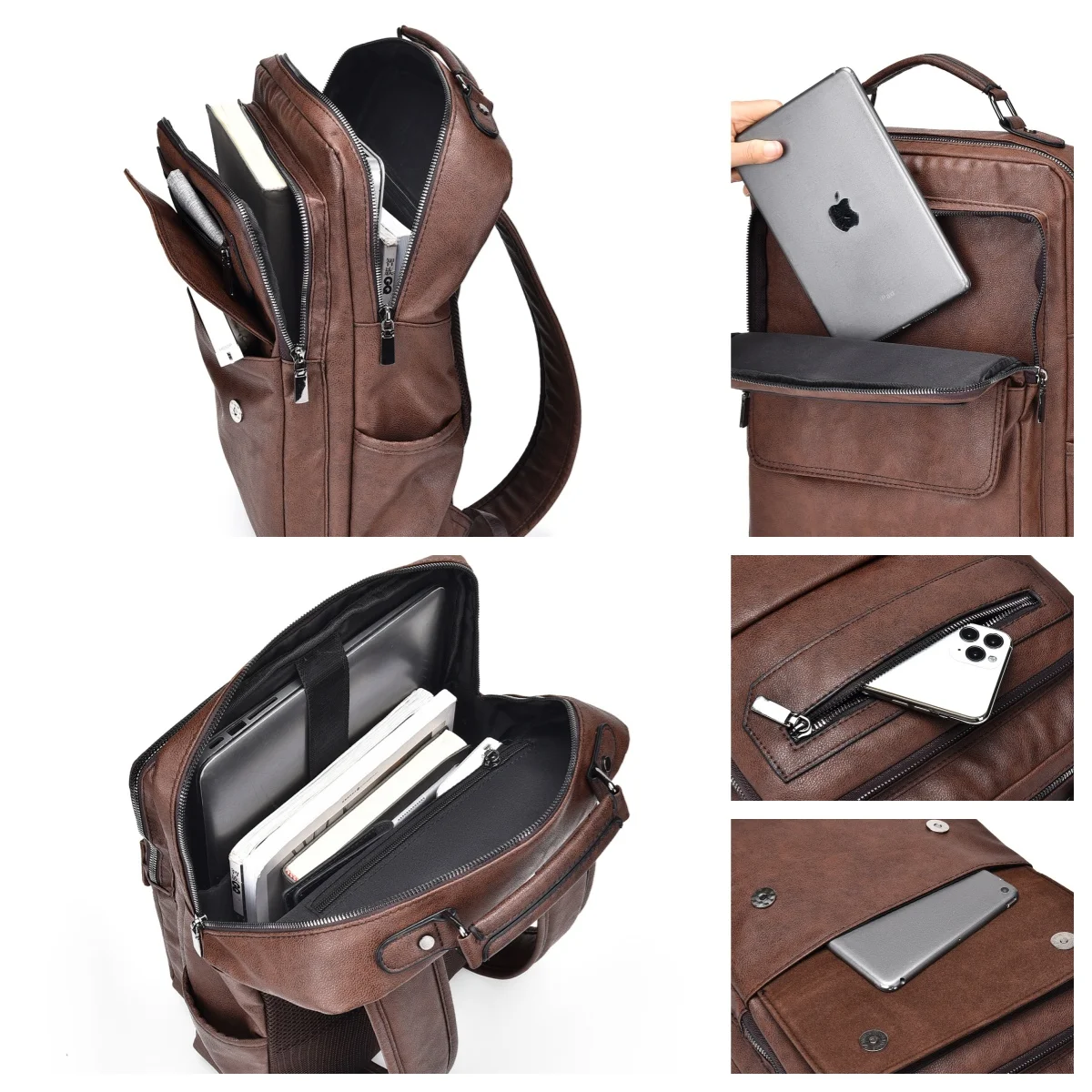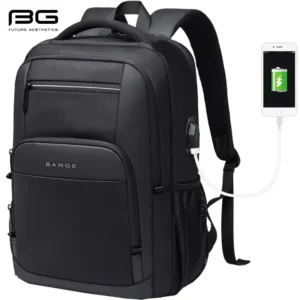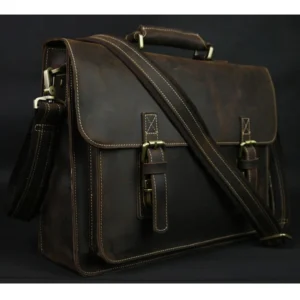Introduction to Commuter Backpack Sizing
Commuter backpacks are distinctly different from their hiking or travel counterparts. While hiking packs focus on outdoor gear capacity and travel backpacks prioritize clothing organization, a commuter backpack is specifically designed for daily urban use—balancing professional appearance with practical functionality.
Choosing the right size backpack for your daily commute isn’t just about aesthetics; it directly impacts your comfort, organization, and overall efficiency throughout the day. Too small, and you’ll struggle to fit essentials; too large, and you’ll carry unnecessary bulk that strains your shoulders and looks unwieldy on public transit.
Backpack size is primarily measured in liters (L), representing the bag’s volume capacity. This measurement provides a standardized way to compare different models regardless of their external dimensions or design variations. Your ideal size will depend on your daily essentials, commute style, and personal preferences.
At Summit Carry, we believe commuter backpacks should perfectly balance function and timeless style. Our approach focuses on creating durable leather backpacks for commuters that accommodate daily needs while maintaining a refined appearance suitable for professional environments.
The spectrum of commuter backpack sizes typically ranges from compact 10-liter minimalist designs to more substantial 30+ liter all-day carriers, with most commuters finding their perfect fit somewhere in between.
The Ideal Commuting Backpack Size: Quick Guide
For most daily commuters, the ideal backpack size falls between 18-25 liters. This versatile “sweet spot” offers the best balance between adequate carrying capacity and manageable size for navigating crowded spaces.
A backpack in this range comfortably accommodates:
– A standard laptop (up to 15-16 inches)
– Daily essentials like wallet, keys, and phone
– A packed lunch container
– A water bottle
– A light jacket or sweater
– Notebooks or documents
This size range prevents overpacking while ensuring you have space for unexpected items that might come up during your day. Finding the right backpack size is ultimately about what size backpack do I need for my specific daily routine.
Generally, commuter backpacks fall into three main size categories that we’ll explore in detail: small (10-15L), medium (16-24L), and large (25-30L+). Each serves different commuting needs and personal preferences.
Essential Factors That Determine Your Ideal Backpack Size
Finding your perfect commuter backpack size isn’t a one-size-fits-all proposition. Three major factors should guide your decision: what you carry daily, how you commute, and your personal preferences for organization and preparedness.
These factors work together in determining what size works best for you. Someone who cycles to work with minimal gear will have very different needs than someone who drives and needs to carry gym clothes alongside work essentials.
Finding the right balance between capacity and practicality is key. A backpack that’s too small means constantly struggling with overstuffing, while one that’s too large adds unnecessary weight and bulk to your daily travels.
The right long-lasting leather commuter bags should accommodate seasonal changes too. Winter commutes often require more space for layers, umbrellas, and other weather-related items, while summer commuting might allow for a more minimalist approach.
Let’s examine each factor in detail to help you pinpoint your ideal backpack size.
Your Daily Essentials: What You Carry Matters
The items you carry every day are the primary determinant of your ideal backpack size. Most commuters need to accommodate several categories of items:
Tech Essentials:
– Laptop (13-17 inches) and charger: 3-4L
– Tablet or e-reader: 1L
– Smartphone, earbuds, cables: 0.5L
Food and Drink:
– Lunch container: 1.5-2L
– Snacks: 0.5L
– Water bottle: 1L
Clothing Items:
– Light jacket or sweater: 2-3L
– Umbrella: 1L
– Change of clothes: 3-4L
Work Necessities:
– Notebooks, planner, documents: 1-2L
– Books: 1-2L per book
– Personal items (wallet, keys, etc.): 0.5L
Beyond raw capacity, organization features significantly impact how efficiently you can use available space. Leather laptop backpacks with dedicated compartments help segregate items and maximize space utilization.
Understanding your daily carry requirements helps determine your minimum viable backpack size. Make a list of your non-negotiable items and consider how they physically fit together in a backpack. This exercise provides a concrete starting point for your size requirements.
How Your Commute Style Influences Backpack Size
Your method of transportation significantly affects what backpack size works best for your daily travels:
Cycling Commuters:
Cyclists benefit from streamlined, more compact backpacks (15-22L) that won’t affect balance or create excessive wind resistance. A secure fit is crucial—look for sternum straps and stabilizing features that prevent shifting while riding. Lower profile designs reduce back sweat, and reflective elements enhance visibility. Waterproofing is especially important since you’ll be exposed to the elements.
Public Transit Users:
Transit commuters typically need medium-sized backpacks (18-25L) that are compact enough for crowded buses and trains. Security features become more important in these environments, and quick-access pockets for transit cards or phones are essential. Small leather backpacks work well here, providing enough space without becoming an obstacle in crowded spaces.
Walking Commuters:
Those walking to work should prioritize comfort and ergonomic features, with backpacks in the 15-22L range that distribute weight evenly. Padded straps and back panels become more important the longer your walk. Waterproofing and weather resistance matter more when you’re exposed to the elements for longer periods.
Driving Commuters:
Drivers have more flexibility with size (20-30L is common) since they don’t need to physically carry their pack for extended periods. Organization becomes more important than compact dimensions, and there’s more freedom to choose based on aesthetic preferences rather than ergonomic requirements.
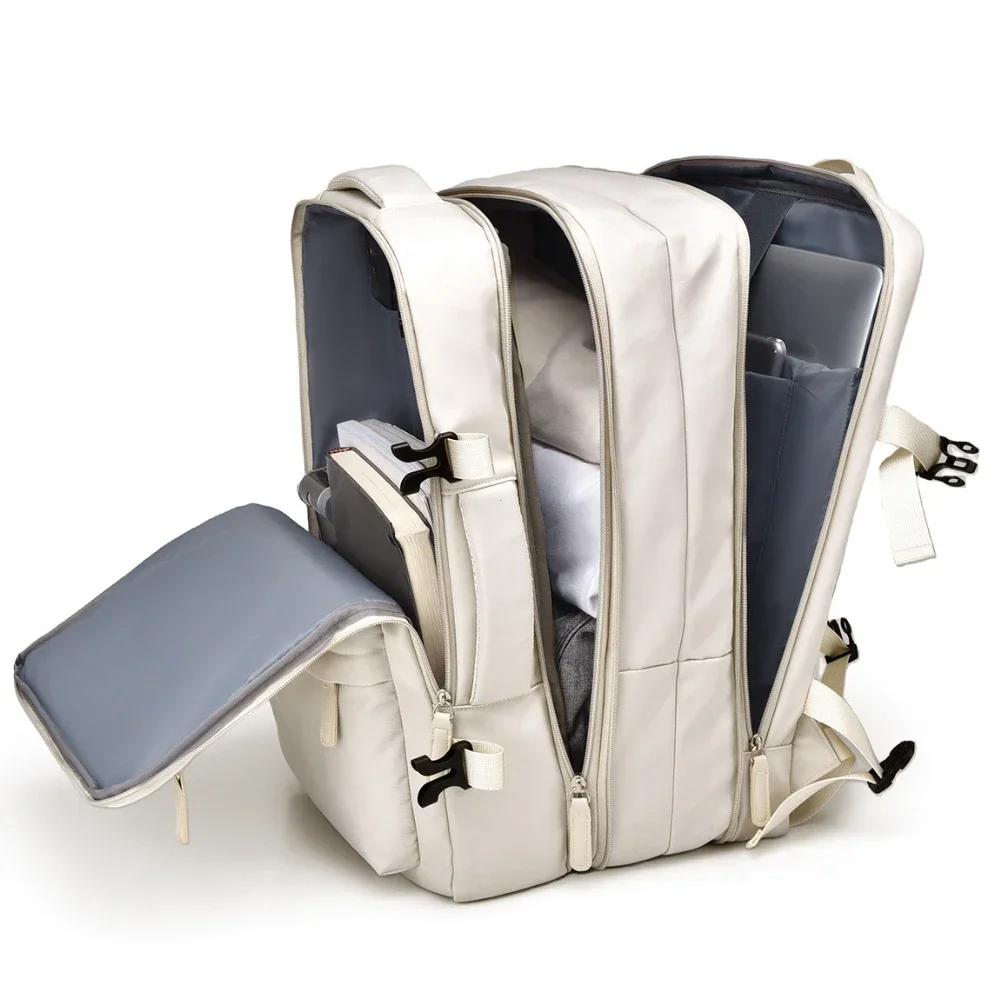
Weather considerations also influence size needs. Rainy or snowy commutes may require space for additional gear like rain covers, umbrellas, or extra layers, potentially pushing you toward a slightly larger size.
Personal Preferences: Minimalist vs. Prepared
Beyond practical considerations, personal style and preparation preferences play a significant role in determining your ideal backpack size.
Minimalist commuters prefer streamlined, smaller packs (10-18L) that force disciplined packing and carry only the essentials. These commuters value lightweight mobility and don’t mind occasionally leaving items behind. They typically choose sleek designs that remain partially empty rather than filled to capacity.
In contrast, “prepared for anything” commuters prefer medium to larger backpacks (20-30L) that accommodate daily essentials plus contingency items. These commuters value self-sufficiency and comfort in knowing they have what they might need. They’re willing to carry slightly more weight for peace of mind.
One consideration is the phenomenon of “backpack creep”—the tendency to fill whatever space is available. A larger backpack doesn’t just allow for more capacity; it often encourages carrying more items than necessary, potentially leading to discomfort and inefficiency.
Finding comfort with your choice means aligning with your personality while staying practical. Unlocking comfort with ergonomic backpacks means finding the right size and features for your specific needs rather than following general recommendations.
Commuting Backpack Size Categories Explained
Now that we’ve explored the factors that influence backpack size selection, let’s examine the three main size categories for commuter backpacks in greater detail.
These categories—small, medium, and large—provide a framework for understanding your options. Keep in mind that there’s considerable overlap between categories, and different manufacturers may classify their products slightly differently.
Each category serves different commuting needs, lifestyles, and preferences. Men’s leather work backpacks and other professional options typically fall into the medium or large categories to accommodate professional necessities, while maintaining appropriate office aesthetics.
In the following sections, we’ll break down each category to help you determine which aligns best with your daily commuting requirements.
Small Commuter Backpacks (10-15 Liters): The Minimalist Choice
Small commuter backpacks are the epitome of minimalist daily carry. Typically measuring around 16 x 10 x 5 inches, these compact companions are perfect for lightweight commuters who carry only the essentials.
A 12-15L backpack comfortably fits:
– A small laptop (13”) or tablet
– Phone, wallet, and keys
– Small water bottle
– Minimal paperwork or a thin notebook
– Ultra-compact umbrella
Advantages:
– Lightweight and unobtrusive
– Easier to navigate crowded spaces
– Forces disciplined packing
– Less strain on shoulders and back
– Often fits under airplane seats when traveling
Limitations:
– Limited capacity for unexpected items
– May not accommodate larger laptops
– Minimal weather protection (fewer layers or rain gear)
– Challenges with bulky lunch containers
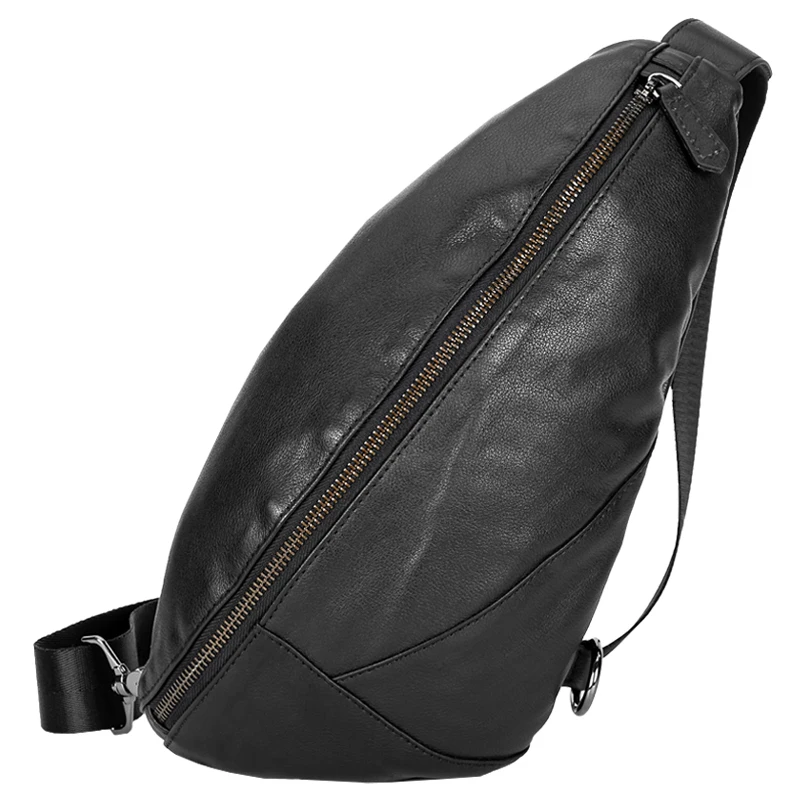
Mini leather backpacks in this size range are ideal for commuters who:
– Work in minimalist environments with cloud-based tools
– Have short commutes in predictable weather
– Have access to office supplies and amenities
– Prefer carrying the absolute minimum
Small backpacks are perfect for the digital nomad who works primarily from a tablet, the urban professional with a short subway commute, or anyone who values mobility and simplicity above extra capacity.
Medium Commuter Backpacks (16-24 Liters): The Versatile Standard
Medium-sized backpacks represent the sweet spot for most commuters, offering an ideal balance between capacity and manageability. Typically measuring around 18 x 12 x 6 inches, these versatile packs accommodate daily necessities without becoming unwieldy.
A 20L backpack (the center of this range) comfortably fits:
– A standard laptop (up to 15-16”)
– Chargers and tech accessories
– Full-size water bottle
– Lunch container and snacks
– Light jacket or sweater
– Notebook and documents
– Personal essentials
Advantages:
– Versatile for varying daily needs
– Accommodates weather changes (room for a compact umbrella or light jacket)
– Balanced profile that works in professional settings
– Sufficient organization for work essentials
– Still manageable on crowded transit
Women’s leather work backpacks in this size range offer professional aesthetics with practical functionality, making them suitable for diverse workplace environments.
This size category represents the most popular choice for daily commuters because it handles the typical workday while maintaining a reasonable size and weight. It’s ideal for:
– Office professionals with standard equipment needs
– Commuters with varying transportation methods
– Those needing flexibility for changing daily requirements
– People who occasionally need to carry extra items
Medium backpacks offer the versatility most commuters need without the bulk of larger options, striking an ideal balance for everyday use.
Large Commuter Backpacks (25-30+ Liters): The All-Day Pack
Large commuter backpacks provide substantial capacity for those with extensive daily carry needs. Typically measuring around 20 x 13 x 8 inches, these spacious packs accommodate everything from work essentials to gym clothes and beyond.
A 28L backpack comfortably fits:
– Larger laptops (17”+) with padded protection
– Complete change of clothes
– Gym shoes or additional footwear
– Full meal prep containers
– Large water bottle
– Tech accessories and chargers
– Books, notebooks, and documents
– Weather protection gear (rain jacket, umbrella)
Advantages:
– Ample space eliminates need for multiple bags
– Versatility for gym-to-office transitions
– Better weather preparedness
– Extra room for unexpected items
– Often features more advanced organization systems
Limitations:
– Can be bulky and cumbersome in crowded spaces
– Heavier, even when not fully loaded
– May appear oversized in professional settings
– Encourages overpacking
– May exceed carry-on requirements for some airlines

Large leather backpacks are ideal for commuters who:
– Combine work and workout in their daily routine
– Work long hours requiring additional supplies
– Commute in variable weather conditions
– Prefer to be prepared for anything
– Drive rather than take public transportation
These substantial packs are perfect for the all-day professional who moves between multiple environments, the fitness enthusiast who hits the gym before or after work, or anyone who prefers having everything they might need readily available.
Beyond Size: Critical Features for Commuting Comfort
While size is a crucial consideration when selecting a commuter backpack, certain features can maximize the utility of any size backpack you choose. The right combination of comfort, organization, durability, security, and style features transforms a simple bag into an essential daily companion.
Premium materials and thoughtful design significantly enhance functionality beyond what raw capacity provides. Durable leather backpacks for daily use offer advantages in longevity, weather resistance, and professional appearance that complement their carrying capacity.
In the following sections, we’ll explore the key feature categories that work alongside appropriate sizing to create the perfect commuting experience. These features not only enhance comfort but also improve efficiency, protection, and overall satisfaction with your backpack choice.
Comfort and Ergonomics: Making Size Work For You
Even the most perfectly sized backpack can become uncomfortable if it lacks proper ergonomic features. Quality comfort elements transform how a backpack feels throughout your commute:
- Padded, contoured shoulder straps distribute weight evenly across your shoulders, preventing pressure points and strain
- Breathable back panels with air channels or mesh reduce back sweat, particularly important for longer commutes or warmer weather
- Sternum straps stabilize the load and prevent shoulder straps from sliding, especially valuable for cycling commuters
- Proper torso length compatibility ensures the backpack sits correctly on your back, with the bottom resting at your waist rather than too high or too low
- Balanced weight distribution keeps heavier items closer to your back and higher in the pack
Premium materials like quality leather actually distribute weight more effectively than many synthetic materials due to their natural structure and the way they conform to your body over time. This means a well-designed leather backpack often feels lighter than its actual weight.
Well-designed ergonomics become increasingly important as your commute duration increases or as you carry heavier loads. Even an extra 15 minutes of walking with poor weight distribution can lead to significant discomfort by day’s end.
Organization and Accessibility: Maximizing Your Space
Smart organization transforms any backpack size into a more efficient carrying system. Thoughtful organizational features can make a smaller backpack function like a larger one by optimizing every cubic inch of space.
Key organization features that enhance commuting functionality include:
- Dedicated laptop compartments with appropriate padding and sizing that keep your computer secure and separate from other items
- Quick-access pockets for essentials like transit cards, phone, or keys that you need to retrieve without opening the main compartment
- Internal dividers and pockets that keep smaller items from disappearing into the bottom of your bag
- External water bottle pockets that save internal space while keeping liquids separate from electronics
- Cable management features like cord organizers or dedicated pockets for chargers and adapters
Leather briefcase backpacks typically excel in organization, combining professional document organization with modern tech storage solutions. Their thoughtful pocket design often eliminates the need for larger sizes by making existing space more efficient.
Well-organized backpacks prevent the frustration of digging through everything to find small items. They also protect your belongings by reducing movement and friction between items during your commute. This organized approach often means you can choose a slightly smaller backpack size without sacrificing functionality.
Durability and Weather Protection: Year-Round Reliability
Commuting subjects your backpack to daily wear and tear that can quickly degrade lower-quality options. Durability features protect not just the bag itself but the valuable contents inside:
- Water-resistant or waterproof materials keep electronics and documents safe during unexpected weather
- Quality construction and reinforced stitching prevent tears and structural failures at stress points
- Reinforced bottom panels resist abrasion from constant setting down on various surfaces
- Protected laptop compartments with padding and elevation to prevent damage if dropped
- Weather-sealed zippers that prevent water from seeping through the most vulnerable points
Premium materials like full-grain leather offer natural weather resistance that improves with proper care. Unlike synthetic materials that degrade with exposure, quality leather develops a protective patina over time that enhances both appearance and performance.
Understanding leather commuter backpack care tips helps maintain these protective qualities throughout years of daily use. Simple maintenance routines significantly extend the life of premium materials, making them more environmentally and economically sustainable in the long run.
Security Features: Protecting Your Daily Valuables
Urban commuting environments present unique security challenges that the right backpack features can address. Protecting your daily valuables goes beyond basic zippers:
- Hidden pockets concealed against your back or within other compartments safely store high-value items like wallets or passports
- Lockable zipper pulls deter opportunistic theft in crowded environments
- Anti-theft design elements like slash-resistant materials or reinforced attachment points prevent grab-and-run theft
- RFID blocking pockets protect digital information on credit cards and identification
- Main compartment access points positioned against your back rather than exposed to the outside
These security features provide peace of mind during your daily commute, especially in crowded public transit settings or when traveling through unfamiliar areas. Even simple deterrents significantly reduce the likelihood of becoming a target.
For daily commuters carrying laptops, tablets, and other technology, these security features protect not just the physical items but the valuable data they contain. The right security features mean never having to worry about your backpack when you’re in transit or when briefly setting it down at a café.
Style and Aesthetics: Professional Appearance for Daily Use
Commuter backpacks should seamlessly transition between transportation and professional environments. Unlike hiking or casual packs, commuter backpacks need to maintain appropriate aesthetics for workplace settings.
Timeless designs offer significant advantages over trendy styles, particularly for premium backpacks. While fashion-forward designs might look dated within a year or two, classic silhouettes and materials remain appropriate regardless of changing trends.
Premium materials like leather offer dual benefits of durability and sophisticated appearance. The natural aging process of quality leather creates a distinctive character that synthetic materials cannot replicate, with each mark and patina telling the story of your daily journeys.
Clean, minimalist designs typically appear more professional in workplace settings. Excessive external straps, bold colors, or overly technical appearances can seem out of place in more formal environments, regardless of the backpack’s actual quality or functionality.
Finding Your Perfect Fit: Properly Wearing Your Commuter Backpack
Even the most perfectly sized backpack can become uncomfortable if worn incorrectly. Proper adjustment and wearing techniques maximize comfort regardless of which size you choose:
To properly adjust your backpack:
1. Loosen all straps completely before putting on the backpack
2. Position the backpack so it sits high on your back—the bottom should rest in the curve of your lower back, not below your waist
3. Tighten the shoulder straps so the pack sits close to your body without gaps
4. Adjust the sternum strap (if available) to a comfortable position across your chest, not too high or too low
5. If your backpack has a waist belt, position it at your hips and tighten for additional stability
For optimal weight distribution, pack heavier items closest to your back and higher up in the backpack. This positions weight closer to your center of gravity and reduces strain on your shoulders. Lighter items should be packed toward the front of the backpack or in external pockets.
Regularly adjust your straps throughout the day, especially if you transition between wearing a jacket and removing it, as this changes how the backpack sits against your body.
Commuter Profiles: Which Backpack Size Suits Your Style?
To help you identify your ideal backpack size, consider which of these common commuter profiles most closely matches your daily routine and needs:
The Minimalist (12-15L):
– Carries: 13” laptop, phone, slim wallet, keys, small notebook, compact umbrella
– Commute style: Often uses public transportation or walks short distances
– Values: Lightweight mobility, streamlined appearance, minimalist aesthetic
– Ideal backpack features: Slim profile, professional appearance, quick-access pockets
The Office Professional (18-22L):
– Carries: 15” laptop and charger, portfolio or document folder, water bottle, lunch container, basic tech accessories, light jacket
– Commute style: Mixed transportation methods, moderate distances
– Values: Professional appearance, organization, versatility
– Ideal backpack features: Dedicated laptop compartment, document organization, business card pockets
The Gym-Goer (25-30L):
– Carries: Work essentials plus gym clothes, shoes, towel, water bottle, protein shaker, toiletries
– Commute style: Often drives or combines public transit with walking
– Values: Compartmentalization, ventilation for gym gear, capacity
– Ideal backpack features: Separate compartments for clothes, shoe storage, water resistance
The Weather-Ready Commuter (20-25L):
– Carries: Standard work items plus rain jacket, compact umbrella, extra layers, insulated water bottle
– Commute style: Often walks or cycles regardless of weather conditions
– Values: Weather protection, adaptability, durability
– Ideal backpack features: Waterproof materials, expandable capacity, external attachment points
Finding your ideal backpack size becomes easier when you identify which profile most closely resembles your daily needs. For more in-depth recommendations, explore our guide to the best commuter backpacks for each commuter type.
14 Inch Leather Laptop Backpack, Brown Leather Backpack, Men's Leather Backpack, Vintage Leather Backpack
Price range: $177.28 through $199.12 Select options This product has multiple variants. The options may be chosen on the product pageDesigner Men's Backpack, Men's Leather Laptop Backpack, Men's Leather Work Backpack
Price range: $158.04 through $160.04 Select options This product has multiple variants. The options may be chosen on the product pageDesigner Mini Backpack, Mini Leather Backpack, Small Leather Sling Backpack, Women's Leather Backpack
Price range: $95.76 through $98.80 Select options This product has multiple variants. The options may be chosen on the product pageDesigner Mini Backpack, Designer Women's Backpack, Mini Leather Backpack, Women's Leather Backpack
Price range: $135.92 through $137.64 Select options This product has multiple variants. The options may be chosen on the product page15 Inch Leather Laptop Backpack, Leather Briefcase Backpack
$332.96 Select options This product has multiple variants. The options may be chosen on the product page17 Inch Leather Laptop Backpack, Men's Leather Travel Backpack, Men's Leather Work Backpack
Price range: $106.28 through $143.88 Select options This product has multiple variants. The options may be chosen on the product page
How Commuting Backpacks Differ from Other Types
Commuter backpacks are specifically designed for urban daily use, with significant differences from other backpack categories:
Commuter vs. Hiking Backpacks:
Hiking backpacks prioritize external attachment points, hydration compatibility, and frame systems designed for trail weight. They typically lack organization for electronics and work items, with limited protection for laptops or tablets. Their technical appearance and specialized features like ice axe loops or trekking pole attachments are unnecessary and often inappropriate in professional settings.
Commuter vs. Travel Backpacks:
Travel backpacks often feature suitcase-style openings, compression systems, and passport/document organizers. They’re designed for occasional use rather than daily wear, with emphasis on maximizing packing capacity over daily comfort. Many travel backpacks include unnecessary features for daily commuting, like hidden passport pockets or compression straps, while lacking quick-access features commuters need.
Commuter vs. School/Campus Backpacks:
School backpacks often feature more casual designs with less emphasis on professional aesthetics. They typically have simpler organization systems focused on textbooks and basic supplies rather than electronics and business documents. Their durability requirements differ since they’re often set on varied surfaces like classroom floors, cafeterias, and outdoor areas.
Purpose-designed commuter backpacks balance professional appearance with practical features that make daily travel more efficient and comfortable. Their specialized organization, protection, and ergonomic features make them superior for daily urban use.
Maintaining Your Commuter Backpack for Longevity
Quality commuter backpacks represent a significant investment, and proper care extends their lifespan considerably. Maintenance needs vary by material but follow these general guidelines:
For leather backpacks:
– Regularly wipe with a soft, dry cloth to remove dust and prevent buildup
– Apply quality leather conditioner every 3-6 months to maintain suppleness
– Address spills immediately by blotting (not rubbing) with an absorbent cloth
– Allow wet leather to dry naturally at room temperature, away from direct heat sources
– Store with light stuffing to maintain shape when not in use
For fabric backpacks:
– Spot clean stains with mild soap and cool water
– Brush off dirt and debris regularly
– Follow manufacturer instructions for deeper cleaning
– Ensure complete drying before storage to prevent mildew
Regardless of material, regularly check and clean zippers, removing debris that might damage the teeth or sliders. Also inspect stitching regularly for early signs of wear, addressing minor issues before they become major problems.
Proper storage when not in use significantly extends backpack life. Store in a cool, dry place away from direct sunlight, which can fade and degrade materials over time. Hang on a hook rather than storing on the floor to prevent deformation and potential moisture damage.
Final Considerations Before Making Your Choice
Before finalizing your commuter backpack size decision, consider these important reflection points:
Will your commute or carry needs change seasonally?
Consider how winter layers, rain gear, or summer essentials might affect your space requirements. A backpack that’s perfectly sized for summer might be frustratingly small when you need to carry a jacket and umbrella.
Do you anticipate changes in your commute method?
If you might switch from driving to cycling or public transit, remember that a backpack that works well in a car might feel oversized on a bicycle or crowded train.
Is expandability important for occasional larger loads?
Some backpacks offer expandable capacity through compression systems or expandable compartments, providing flexibility for changing needs without permanently committing to a larger size.
Have you accounted for all your regular items?
Make a comprehensive list of everything you carry daily, then add occasional items you might need. This provides a concrete basis for size selection rather than relying on general guidelines.
Remember that investing in quality materials and construction is particularly worthwhile for items used daily. Premium backpacks made with superior materials and craftsmanship typically offer better organization, more comfortable carrying experience, and significantly longer lifespan than budget alternatives.
The perfect commuter backpack balances adequate capacity for your needs without encouraging unnecessary bulk. By carefully considering your daily essentials, commute style, and personal preferences, you can find the ideal size that makes your daily journey more comfortable and efficient.

